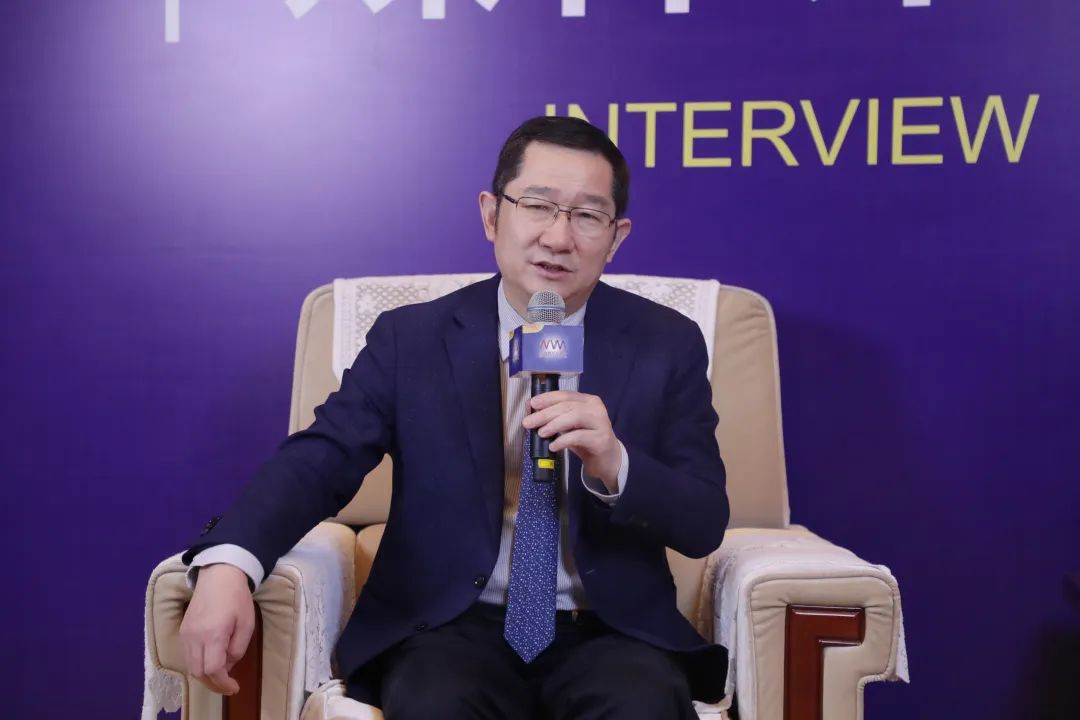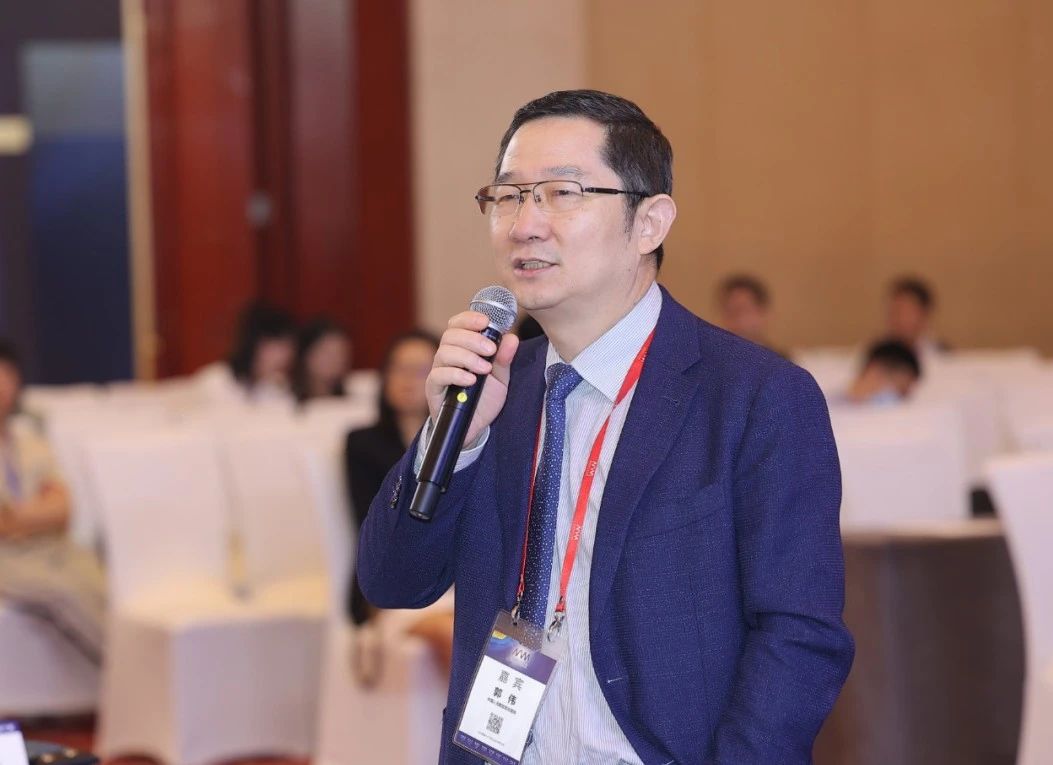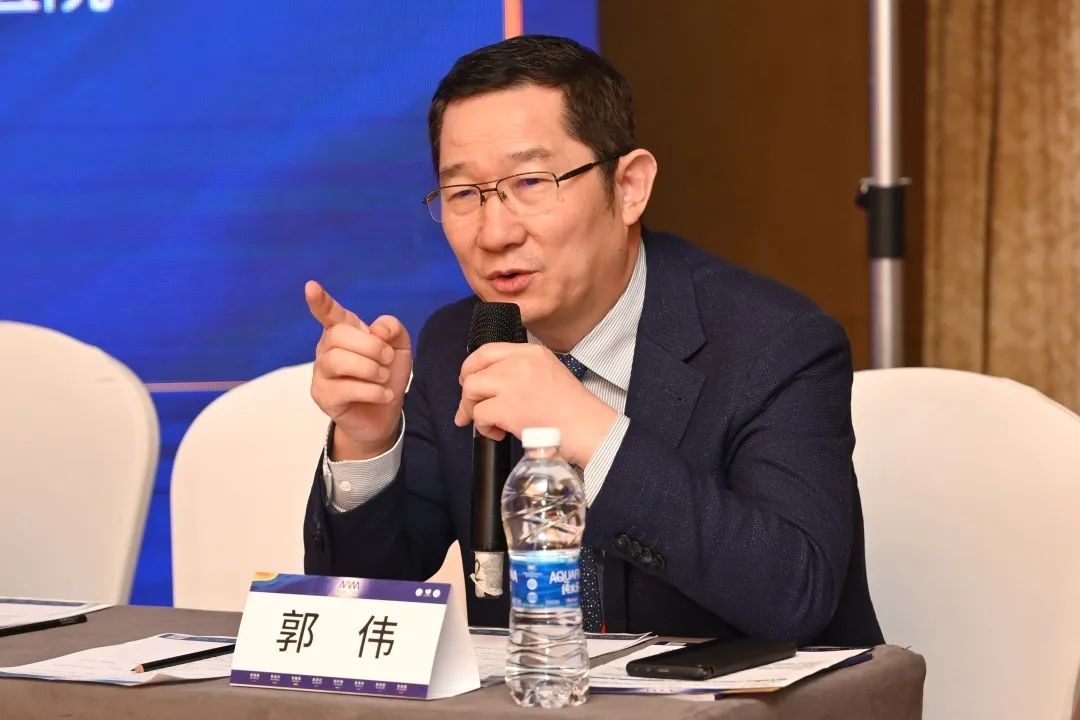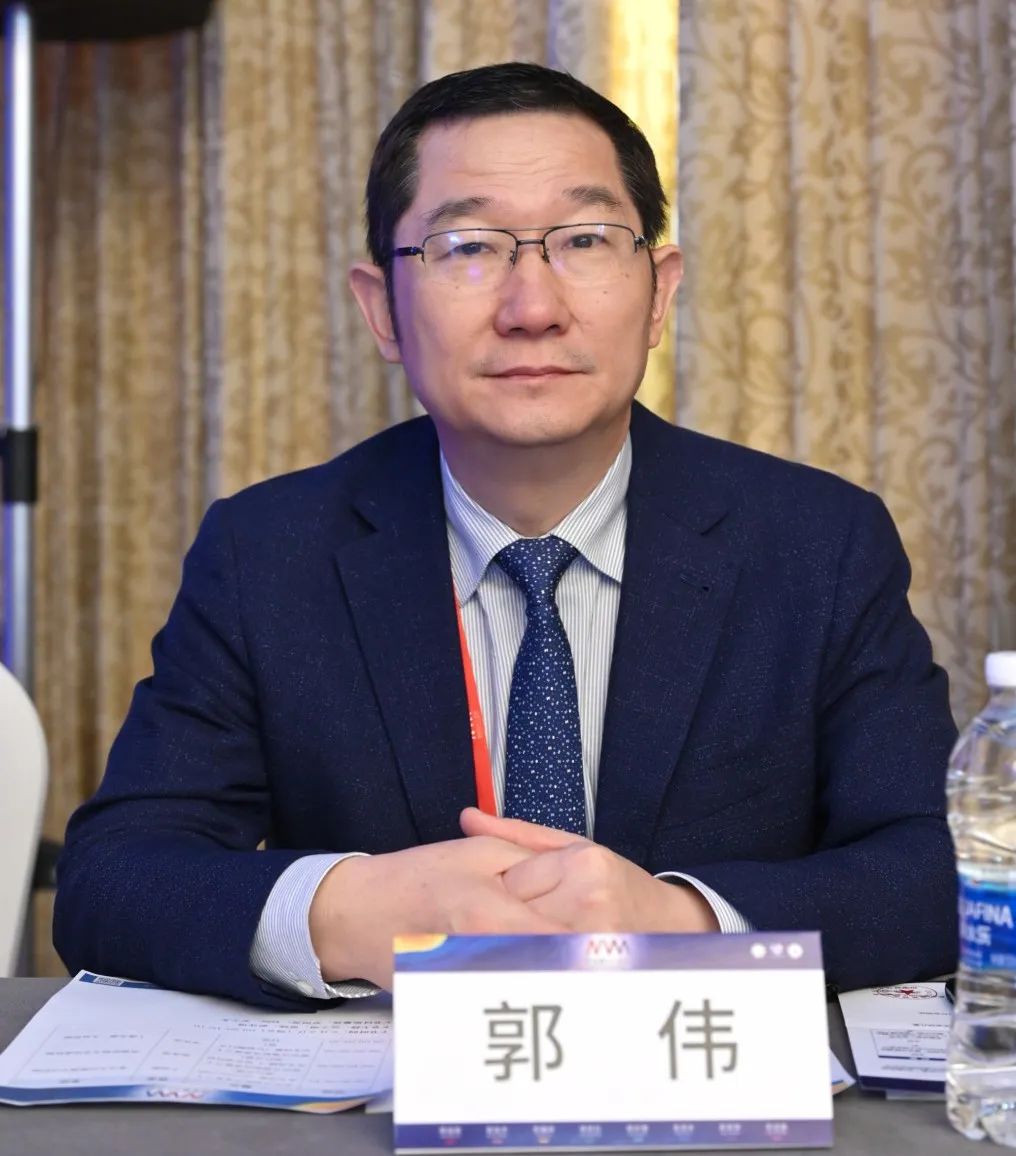Adhering to the spirit of "Never Forget the Beginning, Forever Young, Trial and Error, and Innovation", the "2023 New Vascular Idea Conference" will open up new topics, new sections, and new platforms, and interpret new ideas, new spirits, and new styles in the field of vascular disease. The experts and scholars at the conference were also ignited by the "new", and spoke freely with passion, sincerity and truth, and the atmosphere was warm and the academic atmosphere was strong. Experts shared new academic achievements, delivered cutting-edge messages, and talked about their thoughts and insights on the innovative development of the vascular field. We will also convey the interviews to the public, so that more people can understand the latest news and development trends in the vascular field.
This interview is with Prof. Guo Wei, Director of Cardiovascular Surgery, First Medical Center, PLA General Hospital.

Q1: Most non-ruptured abdominal aortic aneurysms have an insidious onset and are asymptomatic, with the development of artificial intelligence, is it helpful in the prediction and risk assessment of abdominal aortic aneurysms? In what specific areas?
At the invitation of the organizing committee, I have interpreted the Chinese consensus and foreign guidelines on abdominal aortic aneurysm. This guideline is the epitome of the worldwide guidelines on abdominal aortic aneurysm, and we call it the Chinese consensus on abdominal aortic aneurysm. Guidelines speak of the past, while innovations speak of the future. Whether guidelines or consensus are formulated, they are based on past evidence. Therefore, I believe that guidelines are very important in regulating the medical process of the whole industry, and all medical behaviors should be carried out under the framework of respecting the guidelines in our clinical work. Of course there are a lot of things in the guidelines that are not yet clear, and the things that are not clear are exactly where we are going to go in the future, and this is the first level.

The second level is about the disease of abdominal aortic aneurysm. Abdominal aortic aneurysm is different from other diseases, first, it is insidious in its onset. Secondly, it is a benign disease, it is not something that should be treated as soon as it is detected, so it is quite different from other tumors. Here are a few points of concern: the first one is the problem of detection, and detection is actually quite easy because an ultrasound is enough, except that many of our patients have not had an ultrasound, have not had a checkup, and that's a big problem. So who are the patients who should be doing it, everyone over 65, smokers even more so, people who have a family history of aneurysms should be doing it, people who have had femoral aneurysms, popliteal aneurysms should be doing abdominal arterial screening. Of course there are some other things like ethnicity also plays a part in this, so it's a good idea to say that this type of disease is prevalent in one group of people, not all people develop this disease, and that's the first problem with the first finding.
The second problem is the follow-up of detection, observation, just said abdominal aortic aneurysm, not all of them should be treated once detected, it is only when there is a relatively large possibility of rupture, in other words, the possibility of rupture risk is higher than the risk of surgical operation, then it should be treated with surgery. So when some patients are found to have abdominal aortic aneurysm, the tumor is not big enough, they need to be followed up, and this follow-up may involve ultrasound follow-up, CT follow-up, and this follow-up may be at different times or in different ways because the size and growth rate of the tumor may not be the same in each patient, and this involves a management issue.
Regarding whether AI can manage this disease, I think it definitely can, because many functions of AI, such as image recognition, putting a good CT into an AI platform, for example, the AORTIST™ Aortic Artificial Intelligence Cloud Platform that we had released, can accept this CT image, DICOM format put it in, and it automatically reconstructs it, automatically measures it, and automatically recommends It automatically reconstructs it, automatically measures it, automatically recommends a surgical plan, surgical criteria, including follow-up, and so on. This is something that AI can do, and the key is that it can help people collect a database, which is not only textual, but more importantly, it's images. Therefore, artificial intelligence should have great potential in this area, only that people have not yet applied it as a regular way.

Q2: G-Branch™ is available in different diameters and lengths, how was it designed? What are the advantages and limitations of applying it to the treatment of abdominal aortic aneurysms?
This is another topic on translational medicine and innovation.The historical process or story of G-Branch™ has continued for 25 years to get to this point, why? My personal experience is that I started doing hybridization surgery for thoracic and abdominal aortic aneurysms in '98, because we needed to reconstruct the branch vessels, and there was no other way to do it at that time, so we had to go along with the open surgery to reconstruct them. Since then, we have realized that the key issue of aortic endoluminal repair technology is the reconstruction of branch vessels, and how to achieve the reconstruction of branch vessels without open surgery, and this issue has been experienced for 25 years. We have explored in the early stage, such as parallel stent technology, octopus technology, windowing technology, 3D printing guided windowing technology, reverse branching technology and so on, all of these technologies are to solve a core problem, that is, how to reconstruct branch vessels without incision, but it is difficult. Because it's very difficult to do it based on conventional devices, that's why we developed G-Branch™, which is strictly for four-branch reconstruction of thoracic and abdominal aortic aneurysms, but also proximal renal, partial suprarenal, proximal mesenteric, or proximal celiac trunk, which need to be reconstructed for visceral branching vessels. Aortic aneurysms, which may be called proximal renal abdominal aortic aneurysms, perirenal abdominal aortic aneurysms, or thoracoabdominal aortic aneurysms, all of which require endoluminal reconstruction of the branch vessels, should be addressed with this device. This was a development concept at the time.
Of course this process is very heartbreaking, and it has come so far that despite the fact that the multi-center clinic has been done, it still hasn't been used on a large scale in the clinic yet. But we have seen the light and its future. Its multicenter clinical enrollment data is quite great, and it should be said that the data is better than that of foreign products. There is a foreign product called Cook T-Branch, which has only one model, which is 34 proximal, 18 inferior, and 202 in length, but every patient has a different aortic diameter and length, and it is very difficult to use one model to fit all the lesions, so we have paid good attention to this problem in the development of this product. Of course, if you count according to the actual compiled variables, it may reach thousands of models, but we finally optimized the commonly used models to be 26 types, and these types I think can already completely cover the diameter of the total blood vessels, the length of the blood vessels and so on of our Chinese people, and also the westerners. More importantly, we have developed not only the main body of the aortic G-Branch™, but also a bridging vascular graft for the branch vessels called SilverFlow™. Because the diameter of each target vessel is different, it requires a stent-type vessel with different diameters at both ends to reconstruct these branches, and in the case of multibranching devices such as this to reconstruct the branches, the most suitable bridging stent would be a self-expanding stent rather than a balloon type of coated stent. Such a SilverFlow™ with different diameters at each end and different lengths should be more appropriate. It's a combo, it's a whole product.

Q3: What are the milestones to remember in the development of G-Branch™ as an innovative device for endoluminal repair of thoracoabdominal aortic aneurysms and reconstruction of visceral arteries?
The story I just told you has in fact been going on for 25 years, and G-Branch™ has been in the process for no less than a decade. The heartbreaking journey of each product in the development process, it's much more challenging than the complex and severe challenges that doctors themselves encounter in the clinic, that's to push the boundaries. The first challenge I remember with a product like G-Branch™ is of course that after the whole design is done, it doesn't look like what you want it to look like when it's done. Why am I mentioning this? Because doctors are doctors and engineers are engineers, and it's very difficult for these two types of people to fit together. Engineers are less likely to understand what kind of equipment is appropriate to put into the patient's body, and doctors are less likely to understand the difficulty of engineers. In fact, the material science, process science is also quite difficult things, so that the first model made after the big disappointment, but do not rush, through 3 times, 5 times, 50 times or more repeatedly after the modification, why this process is very long? It's because there are so many revisions, to adjust the diameter, length, angle, stitching, marker, form, spacing, etc. of each material. At least I was involved in such a process, because every version had to be adjusted after it came out. And then there's in vitro testing, all kinds of testing, and that process is difficult. This is one aspect of representing the production of the device.
The second one I think is more impressive is the animal experiments, it is very difficult to put such a complicated thing in human body in animal body, it is not possible to put it in the animal body like the original one, unless you use a cow to do it, but there is no machine to match it, and you use a pig to do it, but its blood vessels are not even that big, which is the most difficult one. Thirdly, when doing the human body, the first human experiment is called First-in-man first case, that person is very difficult, because for a new device, although the operator has done animal experiments, but to do it for people is a completely different thing. Let's say it's like opening a space capsule, I don't know whether it's a cliff or a precipice in front of me, and whether it's possible to let the patient come back to life when it hits the ground, and so on. So that in the selection of the patient's general condition, local vascular conditions, as well as the patient is not suitable for this device, with this device to do and with the international equipment what is the difference between the factors to be taken into account. That's why the impression of each place is very impressive, and it's much more than that.


